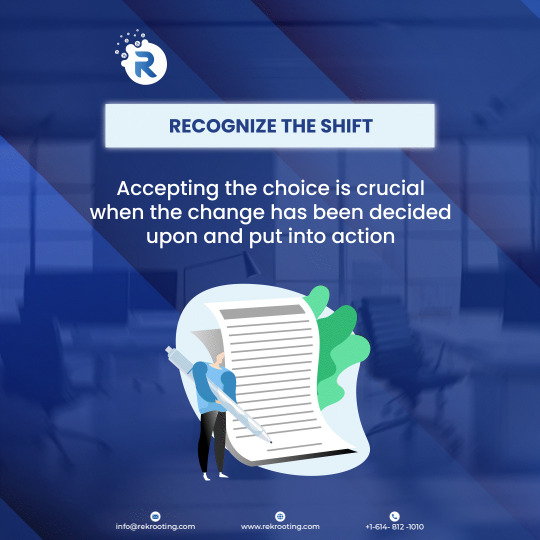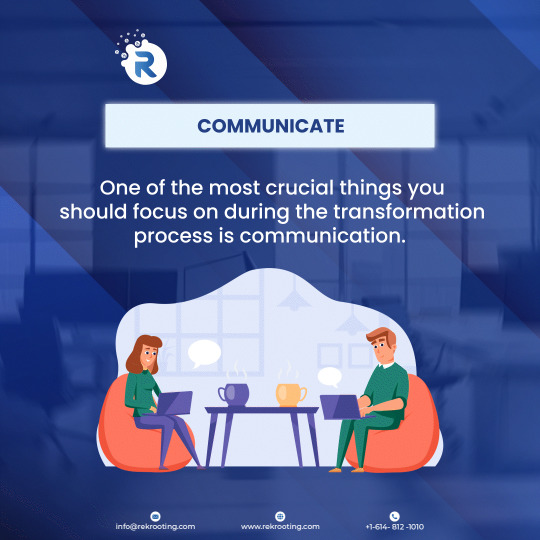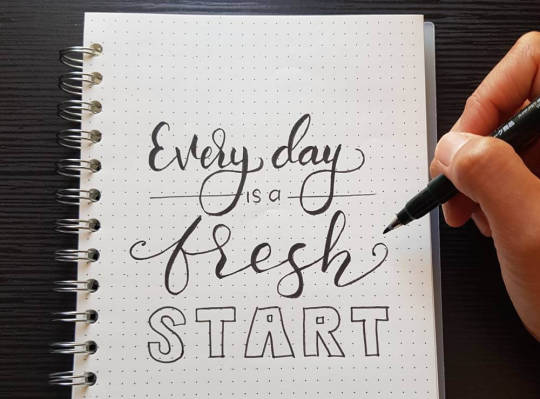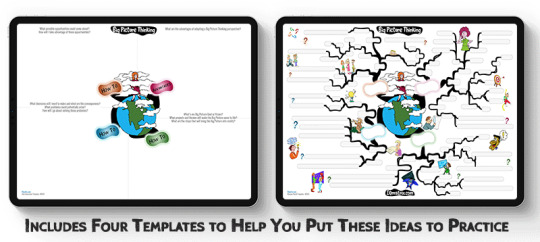#changemanager
Photo

1) Avoid large meetings Large meetings waste valuable time and energy. - They discourage debate - People are more guarded than open - There’s not enough time for everyone to contribute Don’t schedule large meetings unless you’re certain they provide value to everyone. 2) Leave a meeting if you’re not contributing If a meeting doesn’t require your: - Input - Value - Decisions Your presence is useless. It’s not rude to leave a meeting. But it’s rude to waste people’s time. 3) Forget the chain of command Communicate with colleagues directly. Not through supervisors or managers. Fast communicators make fast decisions. Fast decisions = competitive advantage. 4) Be clear, not clever Avoid nonsense words and technical jargon. It slows down communication. Choose words that are: - Concise - To the point - Easy to understand Don’t sound smart. Be efficient. 5) Ditch frequent meetings There’s no better way to waste everyone’s time. Use meetings to: - Collaborate - Attack issues head-on - Solve urgent problems But once you resolve the issue, frequent meetings are no longer necessary. You can resolve most issues without a meeting. Instead of meetings: - Send a text - Send an email - Communicate on a discord or slack channel Don’t interrupt your team’s workflow if it’s unnecessary. Don‘t micromanage. 6) Use common sense If a company rule doesn’t: - Make sense - Contribute to progress - Apply to your specific situation Avoid following the rule with your eyes closed. Don’t follow rules instead follow principles. Challenge the status quo. #changemanager https://www.instagram.com/p/ClY7DmZrvRQ/?igshid=NGJjMDIxMWI=
0 notes
Text





Even though a lot of us like to change jobs and often talk with our colleagues about how things should be done differently.
When these changes eventually take place, we usually feel scared and uneasy. We occasionally might have to accept adjustments that have an impact on our team, our immediate supervisor, our priorities at work, or even our job. Read the blog to know more about workplace change.
You can find the link of the blog in the comments section below. Please feel free to share your feedback and questions. We would love to hear from you.
#workplacechanges#changemanagement#adaptingtochange#changeisgood#staffingsolutions#staffing#recruiting#recruitment#hiring#job
5 notes
·
View notes
Text
How To Turn Self-Improvement Knowledge Into Lasting Change

Introduction
Self-improvement and happiness are goals many of us aspire to achieve. We read books, attend seminars, and soak up advice from experts, hoping to find the secret formula for a better life.
However, the real challenge lies in translating this knowledge into tangible, lasting changes in our daily lives. In this blog post, we will explore actionable steps to bridge the gap between learning and real, sustained results in your quest for self-improvement and happiness.
Part I: Setting Clear Goals
Define Your Objectives: Begin by identifying specific self-improvement goals and the happiness you seek. What areas of your life do you want to enhance, and what does happiness mean to you personally?
Create SMART Goals: Make your goals Specific, Measurable, Achievable, Relevant, and Time-bound. For example, instead of saying, “I want to be happier,” specify, “I will practice daily gratitude for 10 minutes each morning for the next 30 days.”
Part II: Cultivating Self-Awareness
Reflect Regularly: Allocate time for self-reflection and journaling. Record your thoughts, emotions, and experiences to gain insight into your behavior and feelings.
Identify Barriers: Recognize the obstacles that prevent you from putting self-improvement knowledge into practice. These may include time constraints, procrastination, or fear of change.
Part III: Creating Sustainable Habits
Start Small: Rather than attempting a complete life overhaul, focus on one or two specific self-improvement habits. For example, begin with a morning routine or a daily meditation practice.
Consistency is Key: Commit to your chosen habits consistently. Research suggests that it takes around 66 days to form a new habit, so be patient and persistent.
Accountability: Share your goals with a friend or family member who can hold you accountable. Alternatively, use habit-tracking apps or journals to monitor your progress.
Part IV: Managing Your Environment
Eliminate Distractions: Identify common distractions that hinder your self-improvement efforts. Minimize or eliminate these distractions from your environment.
Surround Yourself Positively: Spend time with individuals who support your goals and foster a positive atmosphere. Distance yourself from negativity and toxic influences.
Part V: Seeking Guidance and Feedback
Learn Continuously: Stay updated with the latest research and literature in self-improvement and happiness. Attend workshops, listen to podcasts, or read books to refine your knowledge.
Mentorship and Coaching: Consider seeking guidance from a mentor or coach who can provide personalized advice and hold you accountable for your progress.
Feedback Loop: Be open to feedback from others, as it can offer valuable insights into areas where you may need improvement.
Part VI: Resilience and Adaptability
Embrace Setbacks: Understand that setbacks are a natural part of the journey. Instead of dwelling on failures, view them as opportunities to learn and grow.
Adapt and Adjust: Be flexible in your approach. If a particular self-improvement strategy isn’t working, don’t be afraid to adjust your plan or try a different method.
Part VII: Celebrating Success
Acknowledge Achievements: Celebrate your milestones and achievements along the way. Recognizing your progress can boost motivation and reinforce positive behaviors.
Express Gratitude: Practice gratitude regularly, acknowledging the positive aspects of your journey. This can foster a sense of contentment and happiness.
Conclusion
Transforming self-improvement knowledge into real, sustained results requires dedication, self-awareness, and ongoing effort. By setting clear goals, cultivating self-awareness, forming sustainable habits, managing your environment, seeking guidance, and demonstrating resilience, you can bridge the gap between knowledge and action.
Remember that the journey to self-improvement and happiness is ongoing, and each small step you take brings you closer to your goals. Stay committed, adapt as needed, and savor the joy of your personal growth and well-being.
Check out the Happiness 2.0 Podcast — https://podcast.edwardgdunn.com/
Happiness 2.0 Blog — https://edwardgdunn.com/blog
2 notes
·
View notes
Photo

When Agile becomes Fragile nobody Wins I have been an Agile practitioner a very long time, in fact as an Instructional Designer I was very excited when Agile was created based upon Computer Human Interaction methods and thinking. As one complete fully applied process Agile #AgileWorldInc #AgileTransformation #AgileFinOps #LeanPortfolioManagement https://agile-world.us/when-agile-becomes-fragile-nobody-wins/?utm_source=tumblr&utm_medium=%23AgileWorldInc&utm_campaign=%23AgileWorldInc
#karlsmithuserexperienceu#agile#agilehumans#AgileWorld#AgileWorldUSA#CHANGEMANAGEMENT#DevOps3#Fragile#PlanningPoker#PracticalAgile
2 notes
·
View notes
Photo

3 major mistakes people do when they want to change 1. Changing everything instead of changing one thing and implementing the change gradually. The first job of our brain is survival, and if you put too much challenge on yourself your brain will go into survival mode and fight you not to change because change will be perceived as a thread. 2. Assuming your plan will work. It might not. Ask yourself - is your plan going to work on your worst day or your worst week or you made your plan for ideal circumstances? 3. Waiting for the perfect moment to implement your ideal plan. Waiting for the next day, next week, next year to start. Waiting for the perfect hour. Let me tell you there’s no major difference between starting at 6am on the 1st of January and 6pm on the 2nd of January. And it goes back to number one - any hour any day is ok, as long as you start to change with one thing at a time. #change #changetips #motivationtips #inspiration #howtochange #motivation #onlinefitnesscoach #onlinepersonaltrainer #personaltrainerinsaudi #saudiarabia #changemanagement #changeyourlife #newyear #newyearnewyou #newyearnewme #newyeargoals #newyearresolution #newyearresolutions (at Jeddah, Saudi Arabia) https://www.instagram.com/p/Cm3YItBqah9/?igshid=NGJjMDIxMWI=
#change#changetips#motivationtips#inspiration#howtochange#motivation#onlinefitnesscoach#onlinepersonaltrainer#personaltrainerinsaudi#saudiarabia#changemanagement#changeyourlife#newyear#newyearnewyou#newyearnewme#newyeargoals#newyearresolution#newyearresolutions
3 notes
·
View notes
Text




The Big Picture Thinking IQ Matrix explores how to think more expansively and broadly about the goals and objectives you want to achieve. BIG Picture Thinking expands how you look at the world around you. It’s about not wasting time on irrelevant things that take you no close to your desired outcomes. Instead, it puts things into perspective, which helps you take the most efficient action possible.
Without Big Picture Thinking, you are more likely to make rushed or shortsighted decisions that hinder your progress as you work toward your goals. This map will show you what it takes to think BIG. It will permit you to go your own way, create your own path and break new ground as you work on pursuing your BIG Picture goals.
You can read a more detailed outline of this map at https://store.iqmatrix.com/shop/big-picture-thinking
#BigPictureThinking#CriticalThinking#StrategicPlanning#CreativeProblemSolving#LifeStrategies#Philosophy#Psychology#Productivity#BusinessStrategy#DecisionMaking#Leadership#Success#Motivation#Entrepreneurship#SelfImprovement#GrowthHacking#Innovation#ChangeManagement#VisionaryThinking#FutureTrends#mindmap#mindmaps#mindmapping#iqmatrix
2 notes
·
View notes
Link
#change management#organizational change management#employee engagement#change strategy#change leadership#strategic leadership#change tools#communication planning#change adoption#organizational change#business transformation#change management engagement#changemanagement
2 notes
·
View notes
Text
Establish Successful Change Management Communication In The Workplace.
The best employer branding and advertising agency in New York - Brandemix explains the process of establishing successful change management communications in the workplace.
0 notes
Text
5 ways to bringing Change management into your company

An organization will inevitably experience change; in the era of rising technologies and digital transformation, businesses and employees must adjust. When making changes to an organization, change management (CM) is a methodology that makes sure leaders and employees are prepared and supported.
A change management plan, or more correctly an organizational change plan, aims to integrate procedures that are supported by stakeholders and that contribute to the success of the business and its stakeholders. Stakeholder alignment is, in reality, the most crucial component of organizational transformation. This blog post provides a five-step guide to help organizational change management integrate smoothly.
How to assist in management of organizational change
1.Choose who your audience is
Determine the impact and role of important leaders in the past of organisational change by first identifying them. Your most important leaders have the power to sway staff buy-in and offer useful context. To learn more about “why” the change is being made in the first place, you should speak with leaders. Pose inquiries like these:
What advantages does this modification offer?
What factors led to this modification?
How has the organisation changed over the course of its history?
Next, ascertain which additional groups referred to as the personas are affected by the change. Personas are essential for a change management plan to be implemented successfully. It’s critical to comprehend the persona’s day-to-day activities as they exist right now and how they will evolve tomorrow.
A new technology such as generative AI (Gen AI) is a good example of a change that an organisation might implement. Companies are using this technology to increase productivity and streamline their operations. IBM will use this example to help illustrate each step of the change management implementation process throughout this article.
Who is affected when artificial intelligence is used? The chief technical officer, team managers, and the vice president of the department adding the technology could be the important figures. The people whose work is being enhanced by technology are known as personas.
2.Assemble the important parties
What messages are IBM going to convey to the personas? Remembering that everyone will have a different perspective is crucial when key leaders convene to decide champion roles and behaviours for enacting change.
Use an iterative process to align leadership as best you can. Teams may best identify a change management plan that will support the business and workers by co-creating with key leaders, change management experts, and personas during a stakeholder alignment session.
Recall the example of the organisational shift brought about by gen AI. The executives choosing to deploy the technology, the gen AI technical experts, the team managers integrating gen AI into their processes, and even trusted personas—personas who may have gone through previous organisational changes—would all need to be brought together for proper stakeholder alignment.
3.Outline the goals and parameters
For what reason are you making the change? What are the primary forces behind change? To what extent has the organization’s current structure changed? Stakeholder confusion will increase in the absence of a clear vision for change activities. The extent of the change should be clearly explained; in order to gain your personas’ support, it must make sense to them.
Workflows are enhanced by generative AI, which increases company efficiency. The psychological effect of this technology, meanwhile, is that it deprives those in charge of administrative chores of some of their authority. Employee comprehension of the requirement can be improved by outlining the advantages of artificial intelligence (AI) and the objectives of deploying the technology.
A plan to train staff members to comprehend and apply the technology as part of their responsibilities, in addition to clear initiatives and communication, also aids in fostering buy-in. Make a strong case for the fact that the members of the change team become advocates for a new method of working with the stakeholders. To increase your personas’ enthusiasm and support for the change, demonstrate to them how to utilise the tool, apply the technology, and explore new use cases.
4.Carry out the change management strategy
It’s time to go after much planning on comprehending the personalities, coordinating the stakeholders, and establishing the parameters. “Go live” with the change management strategy, and don’t forget to communicate clearly and with patience with staff. How are workers managing the procedure? Do additional resources need to be allocated? Here’s where you give the input a serious thought and determine whether it advances the organization’s common objectives.
Any new technology implementation carries the risk of malfunctions, lags, or usage mistakes. In the case of their gen AI example, an appropriate deployment strategy would be to test the technology on a limited group of knowledgeable users who received tool training. The change management team can proceed with phasing the organization-wide adoption of technology after gathering input from their “go live” date. Recall to maintain an open channel of communication and to be aware of employee input.
5.Adjust for improvement
While process modifications can be made at any point during the implementation process, the “go live” date of the change should be the time to devote resources to analysing the Return on Investment (ROI). One way to review is by using the “sense and respond” method.
Observe the personalities’ responses to the alteration. Information sessions, questionnaires, and sentiment analysis can all be used for this. Analyse the data after that. Lastly, reply to the persona’s reaction suitably in light of the analysis.
Assess whether the stated vision and advantages of the change are being realised based on the way the business and personas are handling the change. If not, find the holes and work out how to improve the areas where you could be falling short. It is crucial to interact with the stakeholders and pay attention to the personas’ feedback.
To sum up, general artificial intelligence (gen AI) is a tool that benefits from ongoing use and techniques like fine-tuning. The company is able to track the effectiveness of the technology that has been incorporated and its growth, as well as the productivity of the users who have integrated the tool into their daily tasks. Surveys can be distributed by leaders to gauge how well the change is taking. To maintain a seamless implementation of gen AI, the change management staff should personally address any obstacles, problems, or issues.
How to make sure organisational change is implemented successfully
An accelerated culture that is flexible enough to react to change, motivated employees, and the next generation of leadership are all essential components of an effective organizational change management implementation.
It is crucial to comprehend the individuals engaged in the process in order to get ready for an effective change management strategy. Each person brings their unique perspective to the table regarding how to bring about change. It’s critical to stay focused on the reasons behind the shift. Change is being driven by people. To make sure that the change will meet the demands of your stakeholders, communicate with them in a clear, honest, and consistent manner while also showing empathy for their personalities.
Keep in mind that change never stops, even after your change management plan goes into effect. It is essential to keep perceiving and reacting.
Read more on govindhtech.com
#GenerativeAI#AI#artificialintelligence#changemanagement#news#technews#technology#technologynews#technologytrends#govindhtech
1 note
·
View note
Text
The Impact Of Visual Representation In Marketing Today | Indispensable Consulting #shorts
The Impact Of Visual Representation In Marketing Today | Indispensable Consulting #shorts
https://www.youtube.com/watch?v=fbGAH2Kpc1A
This video explores the critical role of visual bias in branding and how it influences consumer perception. It delves into why diverse visual representation matters in marketing and how brands can leverage this for broader appeal and ethical impact.
Listen in as we discuss overcoming visual stereotypes to create a more inclusive advertising world. Subscribe for more insights on ethical branding and effective marketing strategies.
Please visit my website to get more information: https://ift.tt/NZD3lEW
⏰Timestamps
00:00 - The Role of Visual Bias in Marketing
00:34 - The Shift to More Culturally Diverse Branding
✨Transform your leadership with Indispensable Thinking featuring Jim Kerr—subscribe now: https://ift.tt/X0PDGiL
#visualbias #inclusivebranding #diversityinadvertising #ethicalmarketing #brandperception #shorts
via Indispensable Consulting https://www.youtube.com/channel/UCQbdbGMaFxQlkuD8wOYUv-A
April 21, 2024 at 05:30PM
#indispensableconsulting#personalgrowth#companyculture#changemanagement#leadershipcoaching#leadershipdevelopment#managementconsulting#keynotespeaker
0 notes
Text
Ghost Practices:Ever wonder why best practices play a Houdini once the consultants exit stage left? This conversation between Dave Cahill and Rohan Sheth explores the mystery of the disappearing acts in the corporate world.
Learn More: https://www.smartplaybooks.io/resources/playbooks-blog/why-dont-best-practices-take-root-why-do-they-disappear-once-consultants-leave/
YouTube: https://www.youtube.com/watch?v=35_uaU6AxcM
0 notes
Text
Elevate Your Career: Earn Your Change Management Certificate with Change Proud!
Unlock new opportunities and advance your career with Change Proud's prestigious Change Management Certificate program! Our comprehensive curriculum equips you with the skills and knowledge needed to drive successful transformations in any organization. Led by industry experts, our engaging courses cover essential topics such as strategic planning, communication strategies, and stakeholder engagement. Whether you're a seasoned professional or just starting your journey in change management, our flexible online program caters to your needs and schedule. Gain the recognition you deserve and join our community of change leaders today!
0 notes
Text
Gaining Support and Attitude: The Unknown Secret to Effective Change Management" emphasizes the importance of garnering support and shaping attitudes for successful change initiatives, offering insights into overlooked aspects of change management.
0 notes
Text
Health Promotion and Disease Prevention
Health Promotion and Disease Prevention
Introduction
Health promotion and disease prevention are critical components of public health strategies aimed at improving the health and well-being of individuals and communities at the 15th American Healthcare, Hospital management, Nursing, And Patient Safety Summit Here's an overview of these concepts:
Health Promotion:
1. Health promotion involves empowering individuals and communities to take control of their health and make positive lifestyle choices.
2 . It focuses on promoting behaviors and conditions that contribute to good health, such as regular physical activity, healthy eating, stress management, and avoiding tobacco and excessive alcohol consumption.
3 . Health promotion activities often include health education, community outreach, and the creation of supportive environments that facilitate healthy choices.
4 . The goal of health promotion is to enhance well-being, prevent diseases, and improve quality of life.
Disease Prevention:
1 . Disease prevention involves efforts to reduce the incidence, prevalence, and impact of diseases and health conditions.
2 . Prevention strategies may target different stages of the disease process, including primary prevention (preventing the onset of disease), secondary prevention (detecting and treating diseases in their early stages), and tertiary prevention (managing and reducing the complications of existing diseases).
3 . Prevention efforts may include vaccination programs, screening initiatives, health behavior interventions, and environmental modifications to reduce exposure to risk factors.
4 . Disease prevention aims to reduce the burden of illness, decrease healthcare costs, and improve overall population health outcomes.
We cordially invite you to attend the "15th American Healthcare, Hospital management, Nursing, And Patient Safety Summit; (15AHNPSUCG2025)," which will be conducted from May 14-16 as a hybrid event in San Francisco, United States & Virtual.
15th American Healthcare, Hospital management, Nursing, And Patient Safety Summit: This blog focuses specifically on health promotion practice, offering insights, best practices, and case studies from professionals working in the field of health promotion and disease prevention.
Important Information:
Conference Name: 15th American Healthcare, Hospital Management, Nursing, And Patient Safety Summit
Short Name: #15AHNPSUCG2025
Dates: May 14-16,2025
Venue: San Francisco, United States & Virtual
Email: [email protected]
Visit: https://health.universeconferences.com/
Call for Papers: https://health.universeconferences.com/call-for-paper/Register here: https://health.universeconferences.com/registration/Call/WhatsApp Us: +442033222718
#AmericanHealthcareconference2025 #Hospitalmanagementsummit #healthcare #health #primaryhealth #nursing #patientsafety #healthcaremanagement #patientcare #occupationalhealth #healthsystem #pharmaceutical #clinicaltrials #diabetes #changemanagement #mentalhealth #familyplanning #ACP #Infectionprevention #telehealth #oralhealth #Healthcareconference
#AmericanHealthcareconference2025#Hospitalmanagementsummit#healthcare#health#primaryhealth#nursing#patientsafety#healthcaremanagement#patientcare#occupationalhealth#healthsystem#pharmaceutical#clinicaltrials#diabetes#changemanagement#mentalhealth#familyplanning#ACP#Infectionprevention#telehealth#oralhealth#Healthcareconference
0 notes